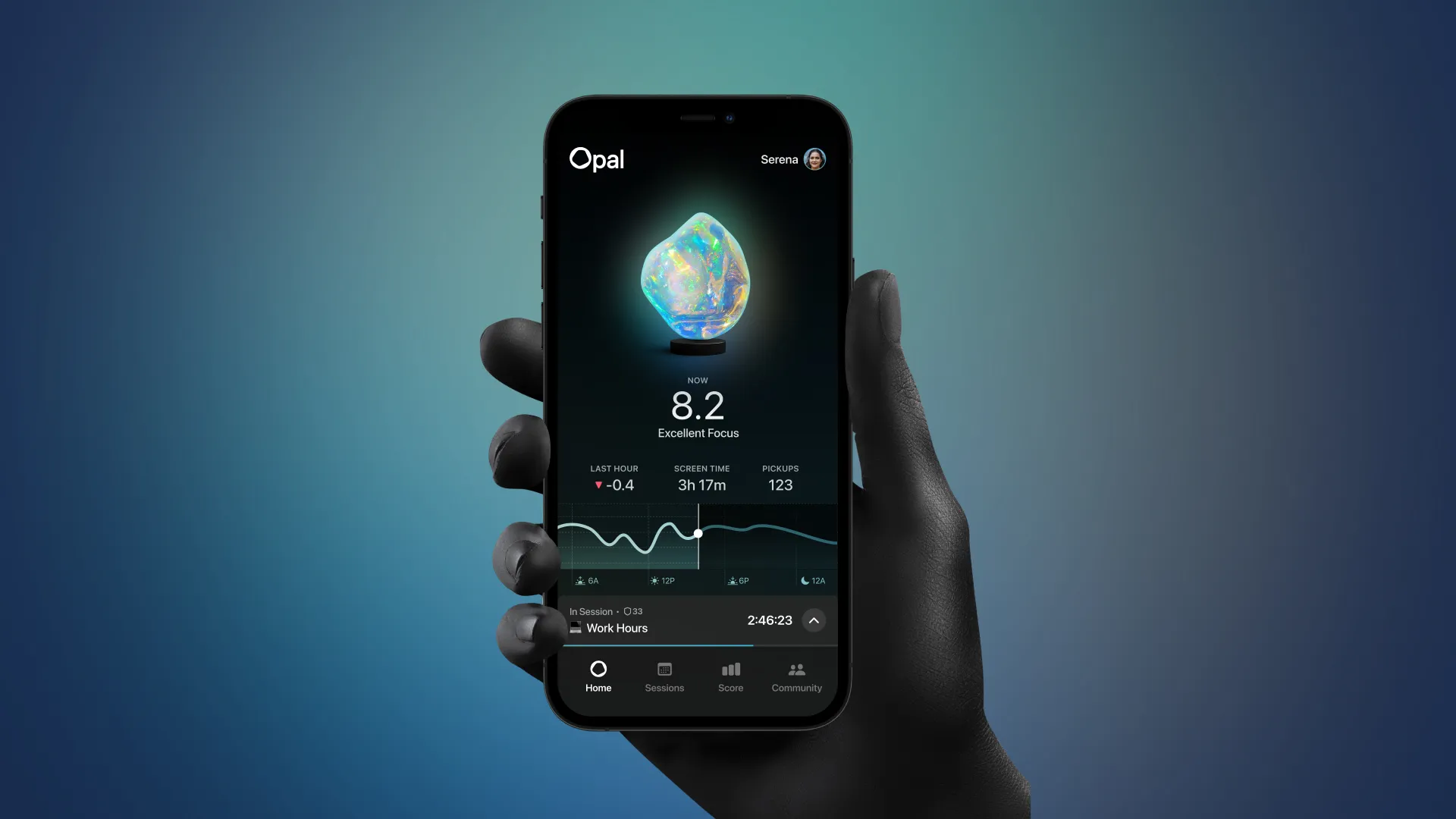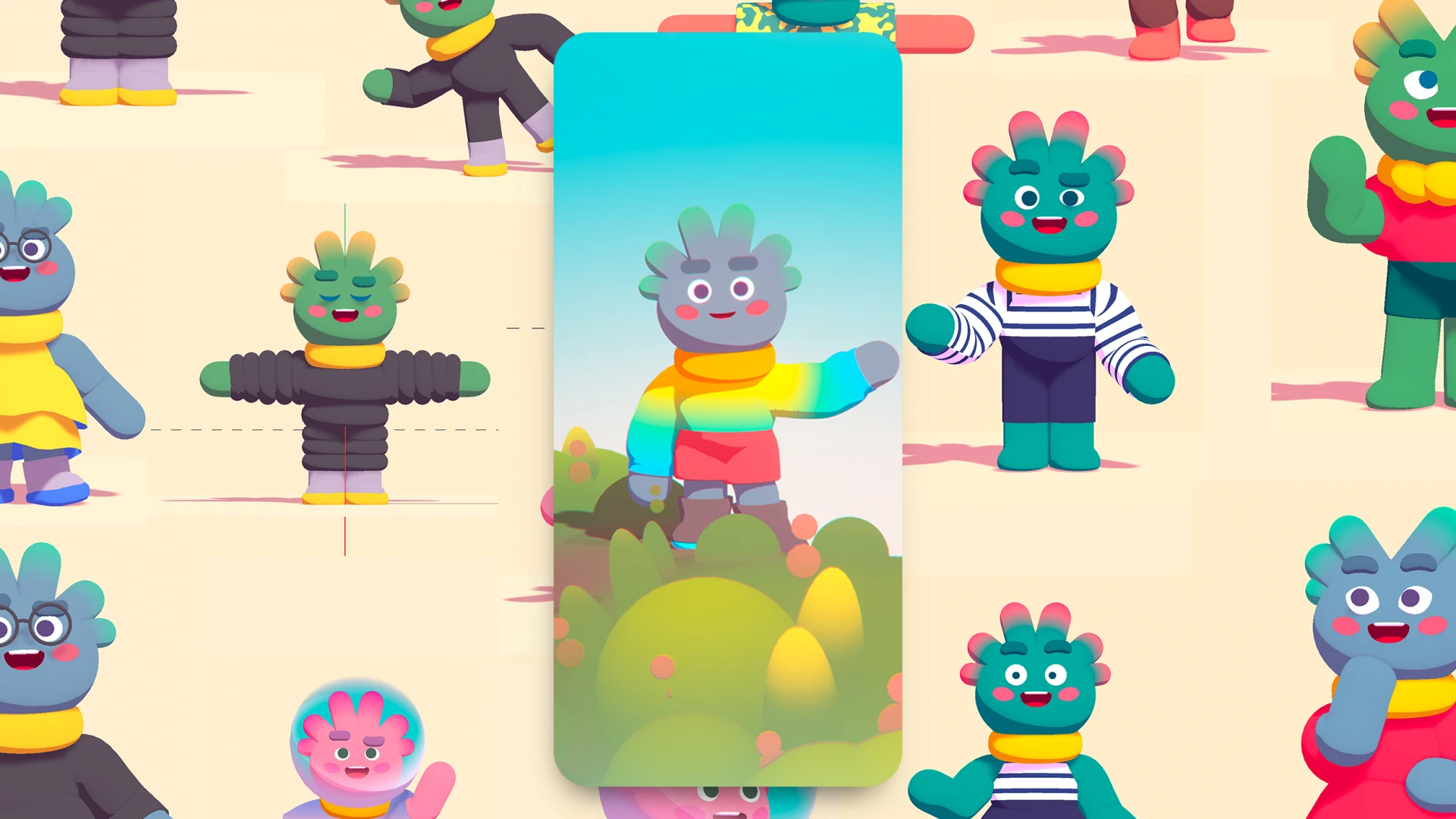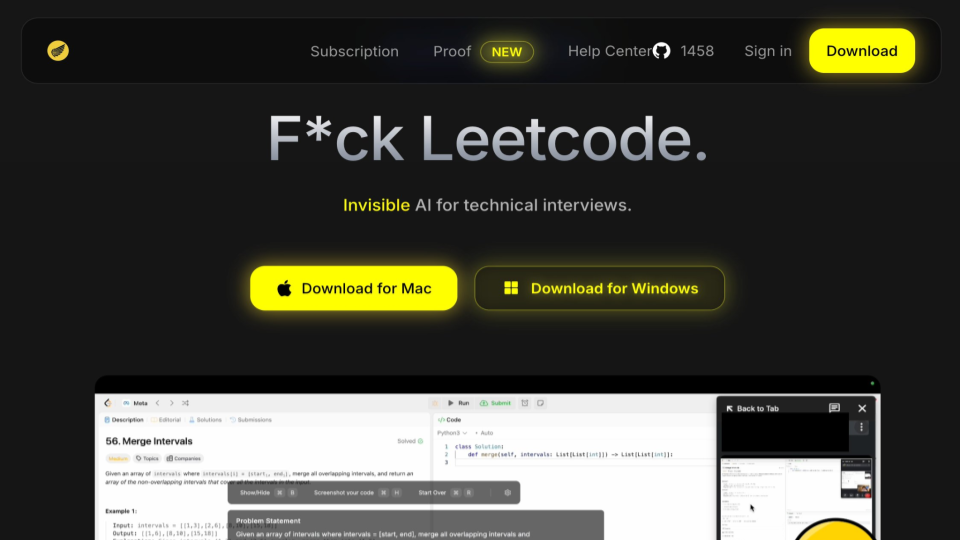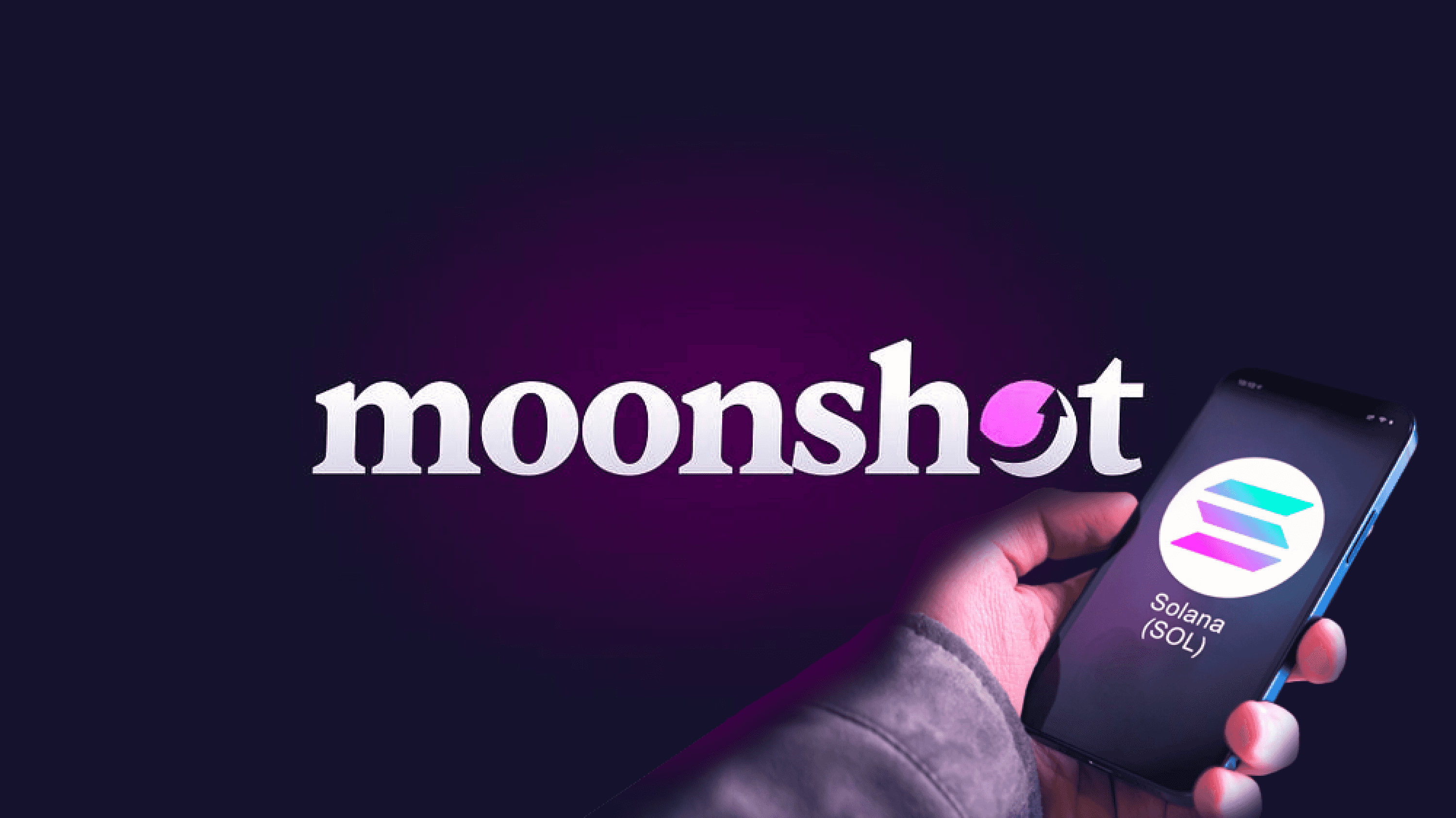Opal's Viral Growth to $500K MRR: A Case Study in Screen Time Management
How Opal leveraged provocative 'doomscroll' hooks and counter-positioning to grow their screen time management app to $500K MRR through viral TikTok and Instagram marketing.

Introduction
Opal is a mobile app that helps users control screen time and stay focused. Despite built-in tools like Apple’s Screen Time, Opal carved out a niche and grew rapidly – reaching around $500K in monthly recurring revenue (MRR) (about $5–6M ARR) with a lean team (Opal's Kenneth Schlenker on the Sub Club podcast). Its growth was fueled by unconventional viral marketing strategies: particularly short-form videos on TikTok and Instagram that hook viewers with “doomscroll” style content. By leveraging provocative messaging and counter-positioning against the very platforms and devices that cause distraction, Opal managed to acquire millions of users (over 4 million, according to the company’s site (Opal - The #1 Screen Time App)) and establish itself as the “#1 Screen Time App.” This case study analyzes how Opal used fake doomscroll-style video hooks, clever messaging, and bold positioning to drive growth and outshine native phone features and competitors.
Doomscroll-Style Video Hooks as Counter-Positioning
One of Opal’s signature tactics was creating short videos that mimic the experience of doomscrolling – i.e. the endless, often negative scrolling of social media or news – to grab attention. These ads start with sensational hooks that would feel at home in a user’s feed, before pivoting to introduce Opal as the solution. By blending in with the very content that fuels screen addiction, Opal’s videos keep viewers watching long enough to deliver a powerful message. Marketing experts noted that an Opal ad can hook you “before you realize it, you’re 40 seconds in and fully hooked” ([This ad from Opal is a masterpiece.
Before you realise it, you're 40… | Evan Carroll](https://www.linkedin.com/posts/theevancarroll_this-ad-from-opal-is-a-masterpiece-before-activity-7165739747351502848-_r3R#:~:text=This%20ad%20from%20Opal%20is,How%20would%20you%20improve%20it)) – a remarkable feat on platforms where users scroll fast.
Critically, this approach served as counter-positioning against larger players (like Apple). Opal’s ads openly criticize and dramatize the harms of smartphones and social media – something Apple cannot easily do when promoting its own Screen Time feature. For example, Opal’s most famous ad opens with the jarring line: “This is not an iPhone. This is a $3 trillion military-grade lethal weapon aimed straight at your brainstem.” (I've seen Opal's ad being copied by I don't know how many other brands… | Levi Steede). This dramatic hook immediately frames the smartphone itself as the enemy. It’s a bold stance that Apple’s Screen Time would never take (Apple isn’t going to call its iPhone a “lethal weapon” stealing your time). By positioning the phone and social apps as the villain, Opal sets itself up as the hero – a tool to fight back – which is a classic counter-positioning move. This resonated with users frustrated by their own habits and skeptical of Big Tech’s intentions. The ad “plays into your emotions, leaving you with a feeling of discomfort, and that’s why it’s so powerful,” one analyst noted (I've seen Opal's ad being copied by I don't know how many other brands… | Levi Steede). In other words, Opal went where competitors wouldn’t dare: acknowledging the dark side of social media and tapping into users’ fear of being exploited.
How Opal’s Viral Video Formula Worked: Opal’s doomscroll-style video ads followed a potent direct-response formula (I've seen Opal's ad being copied by I don't know how many other brands… | Levi Steede):
- Hook: Start with a scroll-stopping statement or scene (e.g. “This is not an iPhone...” shocking the viewer) (I've seen Opal's ad being copied by I don't know how many other brands… | Levi Steede).
- Villain & Problem: Identify a big enemy or problem – such as social media companies “harvesting” your attention and time, exploiting your impulses (I've seen Opal's ad being copied by I don't know how many other brands… | Levi Steede). The ad invokes authority (Tristan Harris’s testimony on tech addiction) as social proof of the “invisible asymmetry of power” trapping users.
- Agitate Emotion: Use urgent, visceral language (even profanity) and imagery to intensify the viewer’s discomfort about their own doomscrolling habit (I've seen Opal's ad being copied by I don't know how many other brands… | Levi Steede) (Opal・#1 Screen Time App's Meta Ad from Jan 2024 | AdScan.ai). The ominous music and rapid cuts in Opal’s videos reinforce this uneasy feeling ([This ad from Opal is a masterpiece.
Before you realise it, you're 40… | Evan Carroll](https://www.linkedin.com/posts/theevancarroll_this-ad-from-opal-is-a-masterpiece-before-activity-7165739747351502848-_r3R#:~:text=framework%20used%20%E2%86%B3%20hook%2C%20problem%2C,How%20would%20you%20improve%20it)).
- Hope & Solution: Pivot to a message of hope – “all hope is not lost…you can take full control of your life” – introducing Opal as the solution to fight back and reclaim time (Opal・#1 Screen Time App's Meta Ad from Jan 2024 | AdScan.ai).
- Value Proposition: Highlight the benefits of quitting the “weaponized” apps: more time, better focus, and a chance to “steer the course of your life” (as the ad puts it) instead of feeding the “beast” (Opal・#1 Screen Time App's Meta Ad from Jan 2024 | AdScan.ai). Opal effectively positions digital detox as life-changing.
- Call-to-Action: Finally, a clear CTA urges the viewer to “take ownership of your life” and download Opal (I've seen Opal's ad being copied by I don't know how many other brands… | Levi Steede) – framing the act of installing the app as an empowering decision.
This narrative arc kept viewers engaged from a shocking start to a hopeful finish. The videos were styled like mini viral clips or motivational rants rather than polished traditional ads, which made them feel native to platforms like TikTok. By the time the Opal app was mentioned, viewers were already invested in the story being told.
Differentiating Opal from Apple Screen Time (and Others)
These doomscroll-style campaigns were not just for shock value – they directly drove traffic and conversions for Opal, and set it apart from the bland utility image of built-in screen time tools. In fact, one single video ad contributed over $5 million in revenue (lifetime) for Opal, according to a breakdown by a marketing strategist (I've seen Opal's ad being copied by I don't know how many other brands… | Levi Steede). That indicates thousands of conversions attributed to a viral creative. Such results show how effective the strategy was in driving user acquisition – Opal found a way to turn eyeballs into downloads by deeply resonating with users’ pain points.
Opal’s messaging deliberately highlighted what native tools lack. Apple’s Screen Time, for example, provides usage stats and basic app timers, but it doesn’t actively motivate users to change or address the emotional side of phone addiction. Opal’s content filled that gap. By aggressively calling out the problem (“you are being **** harvested and no one is coming to save you,” as the ad warns (Opal・#1 Screen Time App's Meta Ad from Jan 2024 | AdScan.ai)), Opal positioned its app as a more committed solution to reclaiming one’s time. The company even explicitly markets itself as Better than Screen Time” in its taglines (Opal - The #1 Screen Time App). This differentiation is not only in marketing words – Opal’s product actually cuts off internet access for distracting apps via a VPN-based blocker, making it harder to bypass than Apple’s honor-system limits (Opal raises $4.3 million for its 'digital well-being' assistant for iPhone | TechCrunch) (How to stop doom scrolling? : r/adhdwomen - Reddit). Users who simply ignored or turned off Apple’s limits found Opal more effective because it enforced discipline. Opal leaned into this advantage, emphasizing real outcomes (like hours saved per day, reduced anxiety, etc.) that outshine what default phone settings achieve.
Compared to other third-party competitors (Freedom, Forest, Moment, etc.), Opal’s brand voice was dramatically different. Many productivity and wellness apps use gentle encouragement or gimmicks (e.g. growing a tree in Forest when you don’t touch your phone). Opal took a more intense, confrontational approach – effectively saying: “Your phone is controlling you; it’s time to fight back.” This created a distinct identity in the digital wellness market. By defying the norm, Opal’s marketing made the brand memorable and positioned it as the leader of a movement (hence calling itself the “#1 Screen Time App” and amassing social proof of millions of users). In short, Opal marketed a lifestyle change, not just an app, which set it apart from feature-focused competitors and helped build a loyal user base.
Leveraging TikTok & Reels for Viral Reach
Opal’s choice of marketing channels was as important as the message. The team focused heavily on short-form video platforms – primarily TikTok and Instagram Reels – to disseminate their viral-style content. These platforms were ideal for a few reasons:
- Massive, Engaged Audience: TikTok and Reels reach hundreds of millions of users, especially the younger demographic that is acutely aware of screen addiction. Opal’s target users (“techy” but wanting to reduce screen time) are likely scrolling these platforms (Identifying and Segmenting Target Market for Better Referral Marketing | Viral Loops Insider), so it met them where they already spend time.
- Algorithmic Boost for Good Content: TikTok’s algorithm in particular rewards videos that capture attention early and drive high watch-time and shares. Opal’s dramatic hooks accomplished exactly that – people would stop to watch an Opal clip thinking it was a provocative TikTok, not an ad, thereby boosting its virality. High engagement made the content appear on more For You pages. Essentially, Opal engineered ads that the algorithms treated like viral content.
- Native Format & Relatability: Opal’s creatives were tailored to feel native to the vertical video format. The production included quick cuts, on-screen captions, informal camera work, and sometimes meme references or trending audio – elements common in user-generated TikToks ([This ad from Opal is a masterpiece.
Before you realise it, you're 40… | Evan Carroll](https://www.linkedin.com/posts/theevancarroll_this-ad-from-opal-is-a-masterpiece-before-activity-7165739747351502848-_r3R#:~:text=framework%20used%20%E2%86%B3%20hook%2C%20problem%2C,How%20would%20you%20improve%20it)). This ensured the ads didn’t stick out as jarring commercials. For example, one Opal TikTok showed a person rapidly switching from work to scrolling and back, which many viewers found painfully relatable. By blending education with entertainment, these videos were both shareable and persuasive.
- Cost-Effective Reach: As a relatively small startup, Opal benefited from the fact that a clever TikTok can gain millions of views organically without a massive ad budget. Even when Opal put paid spend behind content, the cost per acquisition was low because the creatives would naturally attract interest. According to Opal’s founder, they embraced paid social ads early and tested 121 different ad variations to find winners (Opal's Kenneth Schlenker on the Sub Club podcast). This experimentation on platforms like TikTok/IG allowed them to quickly scale what worked. Once a video proved viral, Opal could invest more in it across TikTok Ads, Instagram, and even Facebook to accelerate growth.
Instagram Reels and Stories were used in parallel, often recycling the same TikTok creatives. One viral Opal ad, for instance, was seen across both TikTok and Instagram – grabbing attention on TikTok first, then appearing as a sponsored Reel to the same audience later. Instagram’s slightly older user demographic also helped Opal reach working professionals worried about productivity, not just students. The cross-platform presence amplified Opal’s message consistently: users scrolling any popular feed might encounter an Opal ad that makes them question their habits.
As a result of this short-form video strategy, Opal’s social media presence exploded. Its official TikTok account @withopal garnered hundreds of thousands of likes and a steady stream of comments from intrigued viewers (Opal - The Focus Company (@withopal) - TikTok). More importantly, those viral videos converted viewers into app installers. The app climbed into the top 100 Productivity apps on iOS and earned over 13,000 App Store reviews with a 4.7+ rating, indicating a strong influx of engaged users (Opal's Kenneth Schlenker on the Sub Club podcast). In summary, TikTok and Reels acted as funnels for massive top-of-the-funnel awareness which Opal expertly turned into subscriptions through its compelling content and follow-up (landing pages, App Store listing, etc.).
Key Messaging and Brand Positioning
Opal’s marketing success was not only about where they advertised, but how they communicated. The brand crafted a clear and bold positioning: Opal is “The Focus Company” on a mission to help people reclaim their time and focus (Kenneth Schlenker - Founder and CEO - Opal | LinkedIn). Several key messaging choices made Opal’s content stand out:
-
Painting a Hero vs. Villain Story: Opal consistently casts the smartphone & social media as the villain, and the user (with Opal’s help) as the hero who can conquer this villain. This narrative is emotionally powerful. For example, by calling the phone a “$3 trillion weapon…aimed at your brainstem” and saying “you are being harvested and no one is coming to save you”, the ads stir anger and urgency (Opal・#1 Screen Time App's Meta Ad from Jan 2024 | AdScan.ai). Then Opal offers itself as the weapon to fight back, giving users a sense of empowerment. This us-vs-them framing (user+Opal vs. Big Tech) effectively rallies the audience around Opal’s brand. It’s not just an app; it’s portrayed as a personal ally in a battle for your attention. This messaging tapped into a growing public sentiment critical of Big Tech, making Opal feel timely and relevant.
-
Provocative, Meme-worthy Hooks: Across its campaigns, Opal did not shy away from edgy humor or shock. This made the brand feel bold and candid. One notable ad used the hook “My wife thought I started using ADHD pills! (not true)” to emphasize how dramatically Opal improved the user’s focus. Another version featured a testimonial-like message that implied using Opal was the “ULTIMATE life-hack” for beating procrastination and anxiety (Am I too sensitive or does this ad not sit with you well either? : r/adhdwomen). Opal intentionally used sensational phrasing that would make someone stop and think – or even laugh or argue – but in any case, pay attention. This approach carried some risk (e.g. a few viewers on Reddit felt the ADHD reference was trivializing medication), but the buzz it generated worked in Opal’s favor. The controversial or surprising hooks often led to discussions, which only increased awareness. By packaging serious help (improved focus) in meme-like or clickbait-style wrappers, Opal’s content became highly shareable. The brand effectively made “quitting social media” itself feel like a trendy, addictive challenge – a clever flip of the script.
-
Emphasis on Results and Social Proof: Beneath the flashy hooks, Opal reinforced credibility with data and testimonials. Many ads and landing pages boasted statistics like “94% of Opal customers save 2 hours a day” or “Opal helps cut screen time by 43% on average” (Opal・#1 Screen Time App's Meta Ad from Jan 2024 | AdScan.ai). They also highlighted that over 200K members (and now millions) have joined, including employees at top companies, which builds trust through social proof (Opal・#1 Screen Time App's Meta Ad from Jan 2024 | AdScan.ai). By showing real outcomes (time saved, productivity gained) and quotes from happy users, Opal’s messaging assured viewers that the app isn’t just scare tactics – it actually delivers improvement. Even in short videos, the inclusion of an expert (Tristan Harris clip) or mention of media coverage (“Opal… – The Next Web”) added legitimacy (Opal・#1 Screen Time App's Meta Ad from Jan 2024 | AdScan.ai). This mix of emotional appeal + factual proof made the marketing well-rounded. It grabbed attention with emotion but closed the deal with reason, convincing users that Opal is both exciting and effective.
-
Community and Movement Language: Opal often speaks about its user base as a “community” and a movement. The website invites people to “Join a community of over 4 million on the world’s favorite Screen Time app” (Opal - The #1 Screen Time App). The tone implies that by using Opal you’re part of a collective effort to take back control from technology. This inclusive, movement-oriented positioning further differentiates Opal from sterile built-in phone settings. It gives users an identity (“Opal user”) that feels aspirational. The #Opal or #withOpal hashtags on TikTok compiled user stories, and some ads even featured montages of people enjoying life offline (riding bikes, outdoors) to visualize the “freedom” Opal grants. All of this messaging supports the idea that Opal isn’t just selling an app, it’s selling a healthier lifestyle. That aspirational branding made its content uplifting despite the initially dark hooks.
In essence, Opal’s messaging resonates because it treats the issue of screen time seriously and personally. Instead of a dry productivity tool pitch, Opal’s brand voice says: “We know you’re struggling with phone addiction – and we’re on your side, fiercely and unapologetically.” This candid, almost crusading tone set Opal apart in a crowded market and built strong brand recall.
Viral Campaign Examples and Growth Impact
Opal’s marketing playbook can be illustrated by a few standout campaigns/creatives that went viral:
- “This is Not an iPhone” Viral Video: This TikTok/Meta ad has become almost legendary in digital marketing circles. In it, a narrator delivers a rapid-fire monologue (transcripted earlier) describing the iPhone as a mind-hijacking weapon and imploring viewers to take control. The video uses stark imagery, a mix of stock footage and face-to-camera intensity, and even bleeps out expletives – coming across as an urgent PSA rather than an ad. Performance: This single creative was enormously successful. It reportedly drove over $5 million in subscription revenue by itself (I've seen Opal's ad being copied by I don't know how many other brands… | Levi Steede). It achieved high view counts (likely millions across platforms, given one archive shows at least 171K views on a single version (Opal・#1 Screen Time App's Meta Ad from Jan 2024 | AdScan.ai) with minimal ad spend). The ad was so effective that numerous other brands attempted to copy its style, confirming its impact (I've seen Opal's ad being copied by I don't know how many other brands… | Levi Steede). On LinkedIn, marketers dissected it as “a masterpiece” of direct-response advertising ([This ad from Opal is a masterpiece.
Before you realise it, you're 40… | Evan Carroll](https://www.linkedin.com/posts/theevancarroll_this-ad-from-opal-is-a-masterpiece-before-activity-7165739747351502848-_r3R#:~:text=This%20ad%20from%20Opal%20is,How%20would%20you%20improve%20it)). For Opal, the immediate effect was a surge in traffic and downloads whenever the ad ran. Longer term, this campaign established Opal’s edgy brand persona and gave them a playbook for future creatives. It’s a prime example of viral marketing: people were talking about the ad itself as much as the product, giving Opal loads of earned media.
-
ADHD Hook “Life Hack” Ad: Another notable campaign was an Instagram-focused ad that took the form of a fake iPhone Notes app screenshot. The post’s title blares: “My wife thought I started using ADHD pills! (not true)” – grabbing attention through a provocative personal anecdote. The text then explains how the person struggled to focus, discovered Opal, and dramatically improved (no more procrastination, 50% screen time reduction, etc.), calling Opal the “ULTIMATE life-hack.” It ends with a direct invite: “Try Opal free today, you will notice a difference instantly.” (Am I too sensitive or does this ad not sit with you well either? : r/adhdwomen). Performance: This ad’s exact metrics aren’t public, but its style clearly aimed to capitalize on virality. The casual, story-like format made it shareable; one could easily screenshot it and send to a friend. The outrageous hook likely led to high click-through out of curiosity. While it drew some controversy in forums (a few users felt comparing Opal to ADHD meds was oversimplified), that controversy only increased its visibility. This creative showed Opal’s willingness to experiment beyond video – using viral short-form copy and image memes to get clicks. It likely contributed significantly to trial sign-ups given the strong call-to-action and benefit claims.
-
#ScreenTimeChallenge and Referral Contests: In addition to paid ads, Opal also spurred virality through user challenges and referral programs. For instance, Opal launched a referral contest where users could win tickets to the 2024 Glastonbury Music Festival for getting friends to sign up (Identifying and Segmenting Target Market for Better Referral Marketing | Viral Loops Insider). This cleverly tied into their young, music-loving user base and encouraged word-of-mouth spread. The campaign mobilized Opal’s existing community to evangelize the app (essentially turning users into marketers). According to one report, the referral push was very effective – many users (especially students/young professionals) eagerly shared Opal to compete for the prize (Identifying and Segmenting Target Market for Better Referral Marketing | Viral Loops Insider). This is an example of gamification in marketing: Opal made promoting digital wellness fun and social. On social media, Opal also encouraged hashtags like #OpalChallenge or #FocusFriday, where people would post about spending time offline or achieving goals by using Opal. These organic campaigns often piggybacked on the momentum created by the viral ads. Someone might download Opal after seeing the TikTok ad, then later participate in a challenge that further spreads awareness to their circle. Such community-driven virality helped Opal sustain growth without constantly spending on ads.
By combining viral content (that grabs mass attention) with viral loops (in-app referrals and social challenges), Opal achieved a powerful growth engine. In concrete terms, the payoff was huge: Opal grew to a community of 4+ million users (Opal - The #1 Screen Time App) in just a few years, and reached an estimated ~$500K MRR by 2024 – 2025. The app’s revenue grew in lockstep with its user base, supported by a premium subscription model. Opal’s CEO noted that getting people to pay for the app early on helped prove its value and fuel further marketing spend (Opal's Kenneth Schlenker on the Sub Club podcast) (Opal's Kenneth Schlenker on the Sub Club podcast). Essentially, each viral push brought in paying users, which funded the next round of growth experiments.
It’s worth highlighting that Opal’s approach created marketing content that was itself a talking point. The ads were so distinct that they gained traction beyond just the immediate target audience. Tech bloggers, marketing newsletters, and social media commentators picked up on Opal’s campaigns. Every time someone tweeted “Have you seen that crazy Opal screen time app ad?”, it was free publicity. In the attention economy, Opal mastered the art of generating buzz. The result: a self-reinforcing cycle where content virality led to user growth, which led to more buzz and community activity, and so on.
Conclusion
Opal’s rise to $500K MRR demonstrates the power of savvy marketing in a crowded app space. By going viral with short-form videos and provocative hooks, Opal overcame the disadvantage of competing with default phone features and bigger competitors. Key to its success was counter-positioning – the company took a stance and tone that big platforms couldn’t, portraying itself as the audacious rebel fighting for users’ attention. This made their marketing extremely shareable and compelling. The focus on TikTok and Instagram Reels gave Opal a wide top-of-funnel reach, while the strong messaging and social proof converted that attention into loyal customers.
In summary, Opal didn’t win on functionality alone; it won hearts and minds by marketing a solution to a relatable problem in a creative, emotionally charged way. From fake doomscroll videos that stop you in your tracks to rallying cries of “join the movement”, Opal built a brand that stands for digital freedom. The case of Opal shows that with the right viral marketing strategy – one that hooks viewers, strikes an emotional chord, and differentiates boldly – even a small app can grow to seven-figure ARR and create a lasting impact on its users’ lives.

About Sam Bennett
Our marketing team specializes in analyzing successful growth strategies across technology and consumer products.


